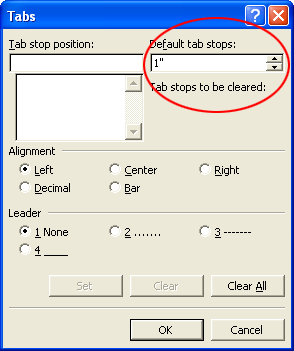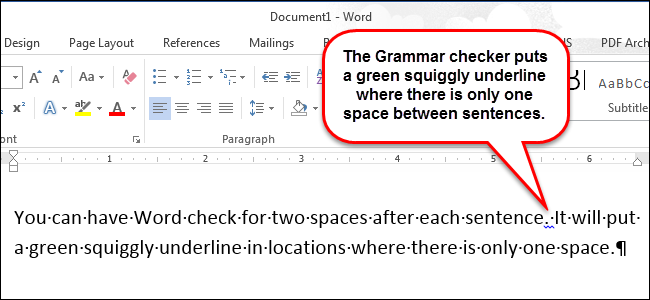2020. 3. 11. 04:55ㆍ카테고리 없음
The indent markers are located to the left of the horizontal ruler, and they provide several indenting options:. First-line indent marker adjusts the first-line indent. Hanging indent marker adjusts the hanging indent. Left indent marker moves both the first-line indent and hanging indent markers at the same time (this will indent all lines in a paragraph) To indent using the indent markers.
Place the insertion point anywhere in the paragraph you want to indent, or select one or more paragraphs. Types of tab stops:. Left Tab left-aligns the text at the tab stop. Center Tab centers the text around the tab stop. Right Tab right-aligns the text at the tab stop.
Decimal Tab aligns decimal numbers using the decimal point. Bar Tab draws a vertical line on the document. First Line Indent inserts the indent marker on the Ruler and indents the first line of text in a paragraph. Hanging Indent inserts the hanging indent marker and indents all lines other than the first line.
Although Bar Tab, First Line Indent, and Hanging Indent appear on the tab selector, they're not technically tabs. To add tab stops.

Select the paragraph or paragraphs you want to add tab stops to. If you don't select any paragraphs, the tab stops will apply to the current paragraph and any new paragraphs you type below it. Removing tab stops It's a good idea to remove any tab stops you aren't using so they don't get in the way. To remove a tab stop, first select all of the text that uses the tab stop. Then click and drag it off of the Ruler.
Word can also display hidden formatting symbols such as spaces ( ), paragraph marks ( ), and tabs ( ) to help you see the formatting in your document. To show hidden formatting symbols, select the Home tab, then click the Show/Hide command. Use the Tab key to indent the beginning of each paragraph in the body of the cover letter. These start with I am exceedingly interested, While working toward, and Enclosed is a copy.
When you're finished, the first page should look like this.
Regardless of which version of Word you're using, the procedure for setting (adding) tab stops on the horizontal ruler is the same. By default, there are no tab stops on the ruler when you open a new blank document.
There is, however, default tab spacing set at every half inch. Before you begin setting (adding) tab stops, you might want to become familiar with the Tab Selector and the available tab stops. The Tab Selector is the small box at the leftmost edge of the ruler. You can click through the Tab Selector to discover each tab described next. Left Tab Text is aligned to the right of the tab stop. Center Tab Text is centered as you type. Right Tab Text is right aligned and extends to the left.
Decimal Tab Numbers are aligned to the left of the decimal. You can't use the Decimal Tab to align numbers around a different character, such as a hyphen or an ampersand symbol. Bar Tab Text isn't positioned with a Bar Tab. Instead, a vertical bar is inserted at the tab position. First Line Indent Located at the top of the ruler, the First Line Indent lets you indent the text in the first line of a paragraph.
Hanging Indent Located at the bottom of the ruler, the Hanging Indent lets you indent the text in the second line of the paragraph and all lines thereafter. Note: Don't see the ruler at the top of your document? Click View Ruler. And if you want to see the tab stop characters in your document, on the Home tab, choose Show/Hide. Tips. To move a tab you've set, drag it to a new location on the ruler. To identify the precise location where you set a tab stop, double-click the tab.
The Tabs dialog box opens and shows the precise location in the Tab stop position box. To confirm the alignment for text you created with the tab stops you set, press Tab. When multiple paragraphs are selected only the tabs from the first paragraph show on the ruler. You can set tabs by using the Tabs dialog box. By using the Tabs dialog box, you get more precise tab positions and also can insert a specific character (leader) before the tab.

On the Home tab, in the Paragraph group, click the Paragraph dialog box launcher, and then click Tabs. In the Tab stop position box, enter the position (measurement) on the ruler where you want to set the tab stop.
Under Alignment, choose Left, Center, Right, Decimal, or Bar. Under Leader, choose 1 None, 2 dots, 3 dashes, or 4 underline to set—in the case of options 2, 3, and 4—a series of characters that links, for example, a section title with a page number. Click Set OK. You can add a first-line indent or a hanging indent. By using a first-line indent, you can set off the first line of text in a paragraph and let all lines that follow align left.
With a hanging indent, the second line of text in a paragraph and all the following lines are indented more than the first line. Do one of the following:. Drag the First Line Indent at the top of the ruler to the location where you want the first line of a paragraph to begin.
How Do I Use A Leader Tab In Microsoft Word For Mac
Drag the Hanging Indent at the bottom of the ruler to the location where you want the second line of the paragraph and all lines thereafter to begin. If you set manual tab stops, the default tab stops are interrupted by the manual tab stops that you set. Manual tab stops that are set on the ruler override the default tab stop settings. Remember that default tab stops are set at every half inch.
On the Home tab, in the Paragraph group, click the Paragraph dialog box launcher. In the Paragraph dialog box, click Tabs. In the Tabs dialog box, in the Default tab stops box. Enter the amount (a unit of measure) of space you want between tab stops. Click the up or down arrow and select a standard unit of measure (for example,.4'). To remove a tab stop that you’ve added to your document, drag the tab stop symbol off the ruler.
When you release the mouse button, the tab stop disappears and your text moves to the next tab location or to the default tab spacing, set at every half inch. For example, the picture below shows text aligned to tab stops that have been added to the document: a right-aligned tab stop at.75 inches and a left-aligned tab stop at 1.25 inches. After the tab stops are removed, the text moves to default tab locations – set at every half inch. Note: If you don’t see the ruler at the top of your document, click View Ruler. If you don’t see the tab stop character in your document, click Home and then click Show/Hide. Remove the default tab spacing To remove the default tab spacing, delete the tab stop characters in your document by either manually selecting and deleting them, or, if you want to remove several or all of them, by finding and replacing them. In the upper right corner of the document, in the search box, type ^t.

Click the magnifying glass, and then click Replace. Leave the Replace With box empty. Click Find and then Replace to move through the document and delete one tab at a time. Click Replace All to delete all of the tabs at once.
Clear all or multiple tab positions A quick way to clear multiple tab stops is to use the Tabs dialog box. Click the text that has tab stops you want to remove. On the Format menu, click Tabs.
In the list under Tab stops, for each tab stop position you want to clear, click the position and then the minus (-) sign. To clear all tab positions, click Clear All.
How Do I Use A Leader Tab In Microsoft Word For Mac Pro
Click OK when finished.